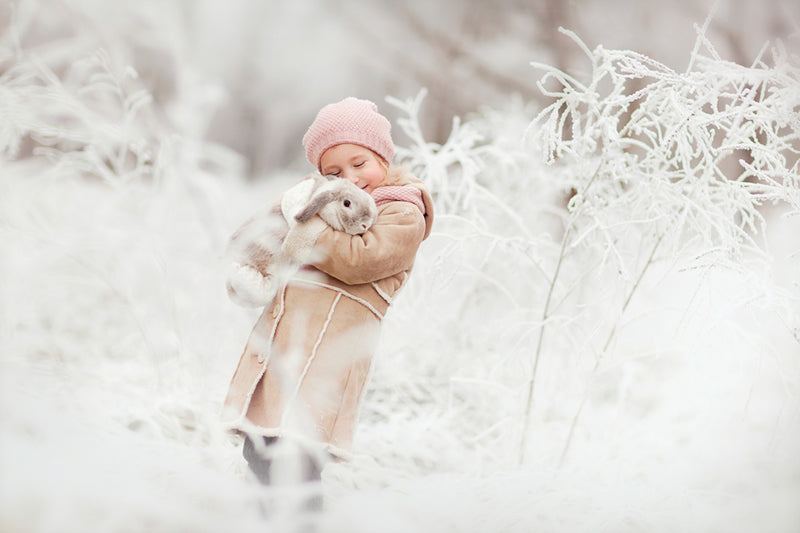
What Temperature Is Too Cold for Rabbits?
Although they may look small and fragile, rabbits are surprisingly well-adapted to cold temperatures. With appropriate husbandry, a healthy adult rabbit can be comfortable in temperatures down to 40 degrees Fahrenheit and can tolerate temperatures that are even lower if necessary. Temperatures below 20 degrees Fahrenheit may be too cold for rabbits and you will need to take some extra precautions to keep your rabbit comfortable outdoors at these temperatures.

Winter Housing for Rabbits
Rabbits prefer temperatures of about 60–65 degrees Fahrenheit, but they are comfortable in lower temperatures as long as they are appropriately housed. An outdoor rabbit hutch must be waterproof and should have a solid roof with a slight overhang to keep rain and snow out of the hutch. Placing the hutch against the side of a building or constructing windbreaks can also help reduce drafts and keep the hutch dry. Avoid sealing up the hutch entirely, because good ventilation is necessary to prevent excess moisture buildup, which can lead to illness.
If your hutch has wire flooring, installing a solid floor in one area will not only help your rabbit escape cold drafts but may also help prevent sore hocks. You can also consider providing a heated pad for your rabbit to warm up on, which may increase the ambient temperature in the hutch as well. Just make sure your rabbit has plenty of space to get off the pad easily so that he does not become too hot.
Providing a small hiding place or nest box filled with plenty of insulating bedding such as timothy hay or wood shavings will also help your rabbit stay cozy through the winter. Remember to change the bedding frequently so that it is always clean and dry.
Winter Nutrition for Rabbits
Rabbits are often more active in cooler weather. They also need to consume more energy to produce body heat and keep themselves warm. Providing extra food, both pelleted diets and timothy hay, will ensure that your rabbit can consume enough calories to endure the winter temperatures. Check your rabbit's weight and body condition frequently throughout the winter. If you notice he's losing weight, you may need to consider increasing the amount of food he receives each day.
Another big concern in cold weather is maintaining your rabbit's access to fresh water. Use heated water bowls or bottles, and check them frequently to make sure the water remains unfrozen.
Temperature for Outdoor Rabbits
Healthy adult rabbits that are acclimated to the outdoors can withstand temperatures below freezing as long as you provide them with good nutrition and appropriate housing. Wet conditions can lower a rabbit's body temperature very quickly, so check your hutch frequently to make sure it is clean and dry.
Rabbits that are accustomed to living indoors should not be placed outside in winter. If you want your rabbit to spend the winter outdoors, it is best to move him outside in the early fall so that he can gradually adjust as the temperatures drop. Very young or old rabbits, or those with medical conditions, should be kept indoors because they may not be able to tolerate cold temperatures even with modifications to their hutches and diets.
Temperatures below 20 degrees Fahrenheit may be too cold even for healthy adult rabbits. Remember that the temperature inside the hutch may be warmer due to your rabbit's body heat, so check both the environmental temperature and the ambient temperature inside the hutch. If the temperature inside the hutch seems too cold, adding extra bedding for insulation, using tarps or cardboard to block drafts, or moving your rabbit indoors until conditions improve may be necessary. With these simple modifications, your rabbit will be safe from the cold all winter long.
- “Cold Weather Care for Rabbits." Companion Animals, United States Cooperative Extension System, 21 Aug. 2019, companion-animals.extension.org/cold-weather-care-for-rabbits/
